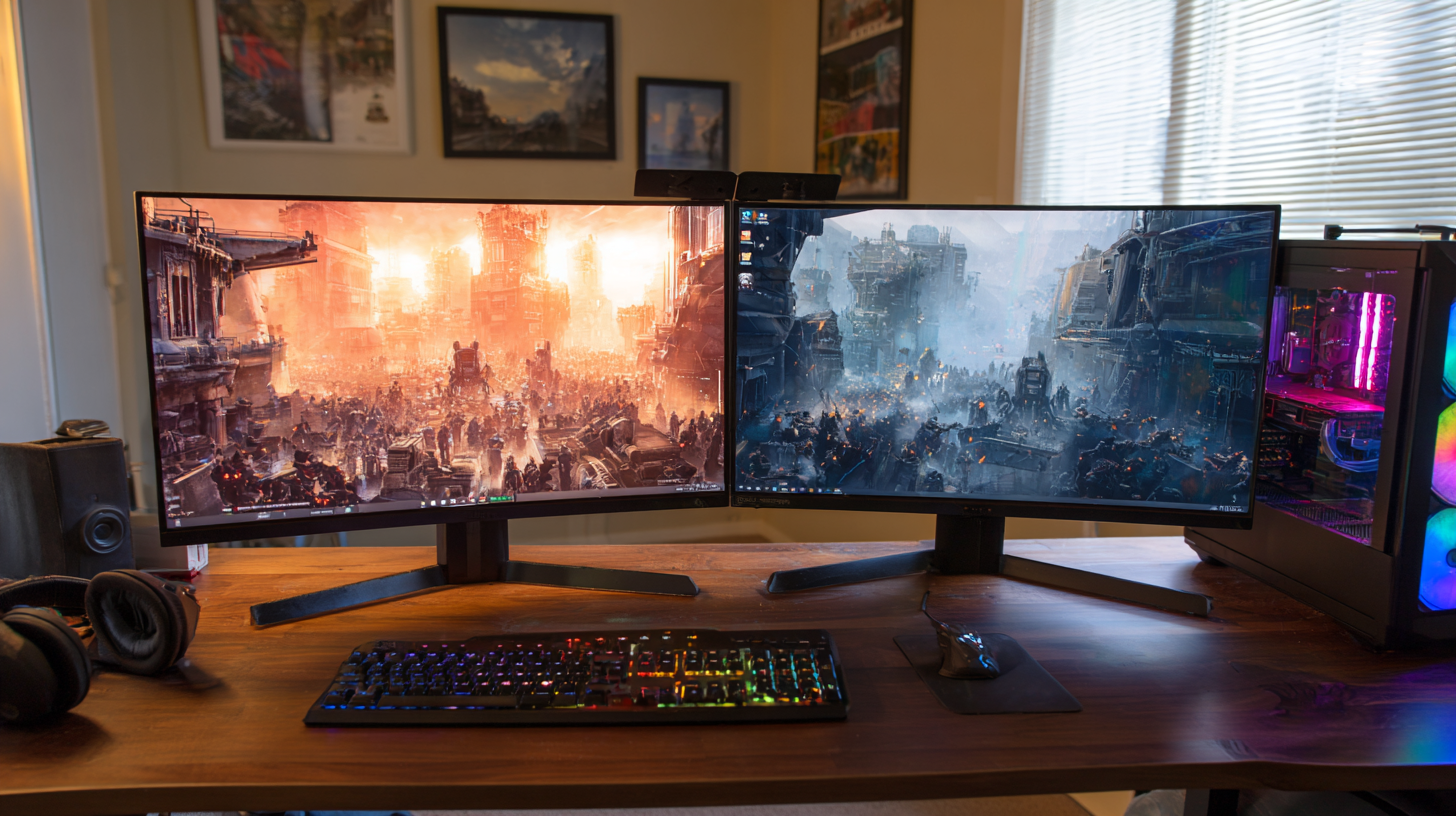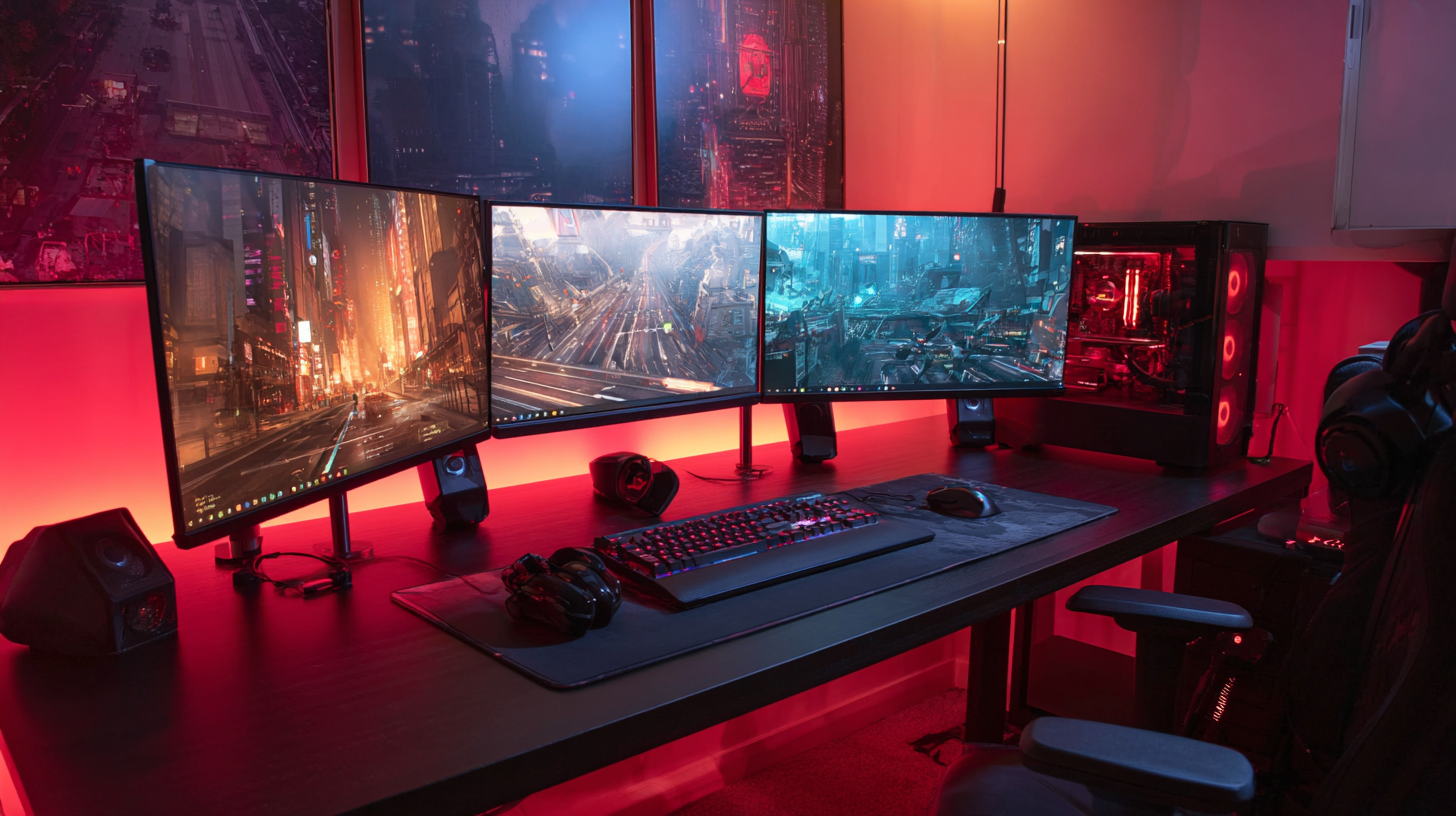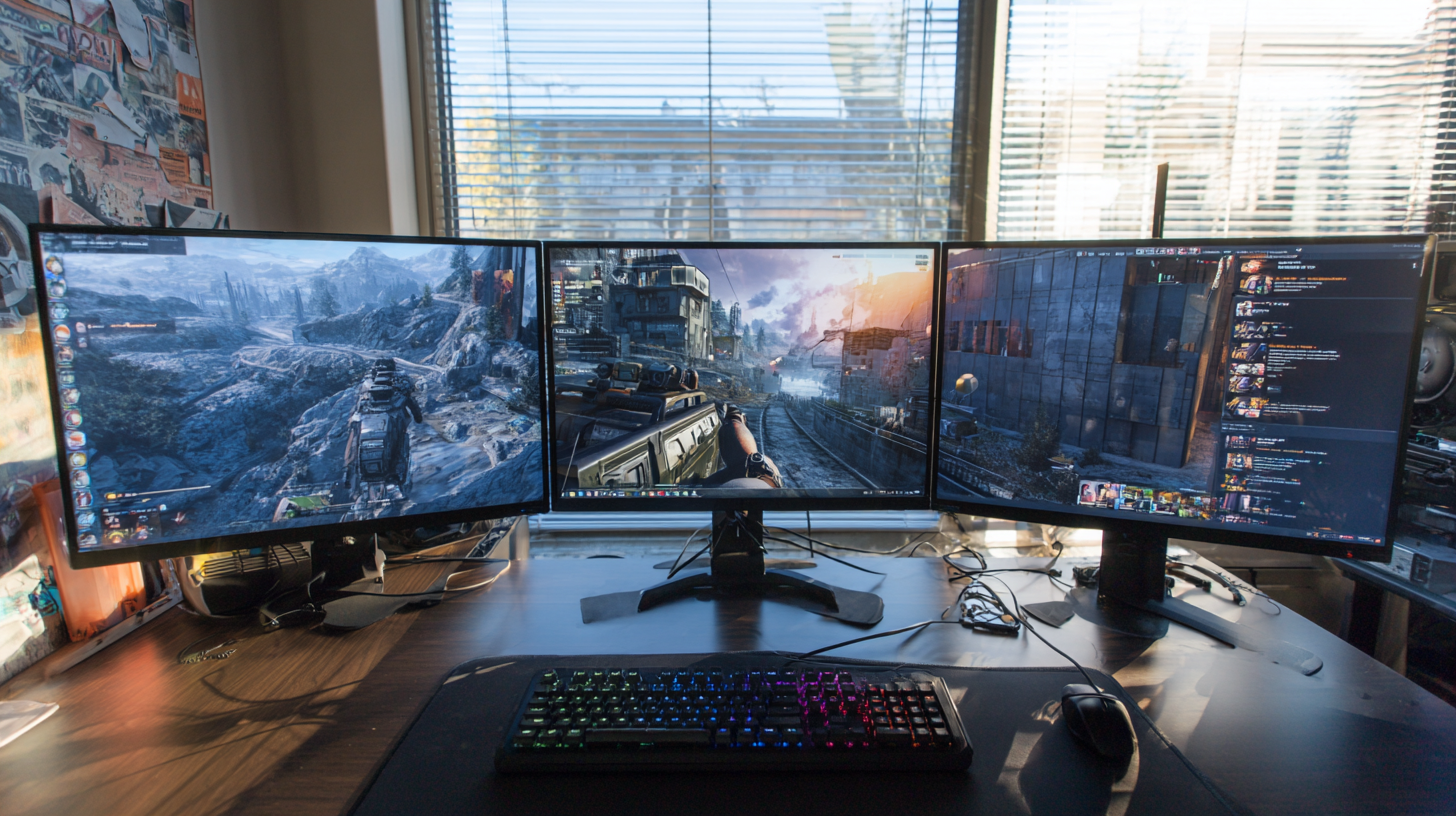Leave Your Message
- Phone
- E-mail
- Whatsapp


In the rapidly evolving world of gaming technology, choosing the right Gaming Monitor can significantly enhance your gaming experience, making it crucial for players to stay updated on the latest offerings. As 2023 unfolds, the market is flooded with a plethora of options, each boasting unique features and specifications designed to cater to diverse gaming styles and preferences. Whether you're a hardcore gamer seeking the highest refresh rates and cutting-edge display technology, or a casual player looking for an affordable yet reliable monitor, our comprehensive comparison of the top five best gaming monitors of this year will guide you through the noise. From stunning visuals and rapid response times to ergonomic designs and budget considerations, we delve into the essential aspects you need to consider to make an informed decision that elevates your gaming experience to new heights. Join us as we explore these stellar monitors that stand out in a competitive landscape, ensuring you find the perfect match for your gaming needs.

When selecting a gaming monitor in 2023, there are several key features that should be at the forefront of your decision-making process. First and foremost, the resolution is critical; with the gaming community increasingly favoring 4K displays, it’s essential to consider monitors that support this high resolution for stunning visual clarity. Refresh rate also plays a crucial role—higher is better, with options reaching 240 Hz now available, offering smoother gameplay that enhances the overall experience.
Panel technology is another vital aspect. OLED panels, for example, offer superior contrast and vibrant colors, making them perfect for immersive gaming sessions. Additionally, curved monitors can provide a more engaging viewing angle, as they wrap around your field of vision. Input options should not be overlooked either; make sure the monitor you choose comes equipped with modern I/O ports to ensure compatibility with the latest gaming consoles and PCs. With a variety of exciting new models released this year, gamers have more choices than ever to enhance their gaming setup.
When evaluating the best gaming monitors of 2023, a critical aspect to consider is the comparative analysis of refresh rates and response times. Gaming monitors typically feature refresh rates ranging from 60Hz to an impressive 360Hz, with higher refresh rates providing smoother visuals and reducing motion blur during fast-paced gaming. According to a recent report by Display Supply Chain Consultants (DSCC), the demand for 144Hz and 240Hz displays has surged, driven by competitive gamers who require the utmost precision in their gameplay.
In terms of response time, measures often range from 1ms to 5ms. A lower response time translates to less ghosting and smoother transitions in high-action sequences. A study conducted by TechRadar noted that monitors boasting a 1ms response time critically outperform their 5ms counterparts, with gamers reporting a significant improvement in their gaming experience, particularly in titles requiring quick reflexes, such as first-person shooters. As the gaming industry evolves, understanding these specifications becomes paramount for gamers looking to enhance their performance and fully enjoy the immersive worlds of 2023's top titles.

 When choosing the best gaming monitor, understanding resolution and panel types is key to optimizing your gaming experience. The main resolutions to consider are 1080p (Full HD), 1440p (Quad HD), and 4K (Ultra HD). According to the data from the
International Data Corporation (IDC), 4K gaming monitors are predicted to dominate the market, with a 20% increase in shipments in 2023. This resolution provides stunning visuals, making it perfect for gamers looking for a highly immersive experience, especially in AAA titles that are graphically intensive.
When choosing the best gaming monitor, understanding resolution and panel types is key to optimizing your gaming experience. The main resolutions to consider are 1080p (Full HD), 1440p (Quad HD), and 4K (Ultra HD). According to the data from the
International Data Corporation (IDC), 4K gaming monitors are predicted to dominate the market, with a 20% increase in shipments in 2023. This resolution provides stunning visuals, making it perfect for gamers looking for a highly immersive experience, especially in AAA titles that are graphically intensive.
Alongside resolution, panel types significantly impact performance and visual quality. The most common types are Twisted Nematic (TN), In-Plane Switching (IPS), and Vertical Alignment (VA). Reports from DisplayMate Technologies highlight that IPS panels offer superior color accuracy and wider viewing angles, making them ideal for competitive gaming. Conversely, TN panels are favored for their faster response times and higher refresh rates, appealing to gamers who prioritize speed over color fidelity.
Tip: To choose the right panel type, consider your gaming style. If frame rates are crucial—like in first-person shooters—opt for TN. If you enjoy visually stunning open-world games, an IPS panel will elevate your experience. Always check for adaptive sync technologies such as G-Sync or FreeSync, which can significantly reduce screen tearing and enhance visual fluidity.
When it comes to gaming monitors, adaptive sync technologies have become essential for providing a smooth and enjoyable gaming experience. The two major players in this space are NVIDIA's G-Sync and AMD's FreeSync.
G-Sync is designed to work exclusively with NVIDIA graphics cards, offering variable refresh rates that eliminate screen tearing and reduce stuttering. This technology maintains a minimum refresh rate, which is particularly beneficial when frame rates drop, ensuring that gameplay remains fluid and visually appealing.
On the other hand, FreeSync is an open standard that works with a wide range of monitors and AMD graphics cards. It operates similarly to G-Sync, providing adjustable refresh rates to create a smoother experience during gameplay. However, FreeSync has gained popularity not just for its compatibility but also for its affordability, making it an attractive option for gamers looking for value without compromising on performance.
Both technologies have their merits, but the choice ultimately depends on the gamer’s specific hardware setup and budget priorities. Regardless of the choice, investing in a monitor with adaptive sync capability can greatly enhance the overall gaming experience.
As we delve into the exciting realm of gaming monitors in 2023, it’s essential to recognize the emerging technologies that are reshaping the landscape. Innovations such as Mini-LED backlighting and OLED panels are revolutionizing visual quality, providing gamers with deeper contrast and vibrant colors. These advancements not only enhance the gaming experience but also cater to the growing demand for immersive gameplay. Look for monitors that utilize these technologies to ensure you are gaining the full spectrum of visuals that modern games have to offer.
When selecting a monitor, consider the refresh rate and response time that suits your gaming style. A higher refresh rate, such as 144Hz or even 240Hz, provides smoother motion, crucial for fast-paced games. Additionally, ensure that the monitor has low input lag to reduce delays between your actions and what you see on screen. This combination significantly enhances competitive gaming performance.
Don’t overlook connectivity options either; devices with HDMI 2.1 support are becoming more prevalent and are necessary for maximizing frame rates on next-gen consoles. Future-proofing your setup by investing in a monitor that readily accommodates the latest standards will pay off as gaming technology advances. As the industry trends continue to evolve, staying informed will help you make the best choices for your gaming environment.
| Monitor Model | Resolution | Refresh Rate | Response Time | Size | Price |
|---|---|---|---|---|---|
| Model A | 2560 x 1440 | 165Hz | 1 ms | 27 inch | $399 |
| Model B | 1920 x 1080 | 240Hz | 0.5 ms | 24 inch | $299 |
| Model C | 3840 x 2160 | 144Hz | 4 ms | 32 inch | $799 |
| Model D | 2560 x 1440 | 120Hz | 3 ms | 27 inch | $499 |
| Model E | 1920 x 1080 | 144Hz | 1 ms | 24 inch | $199 |
